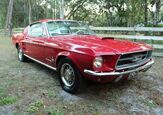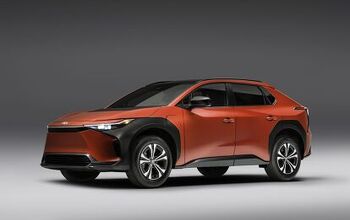Toyota BZ4X Concept Previews RAV4-Sized 2022 EV Crossover

Get ready for the onslaught of Toyota EVs. The Japanese brand is committed to debuting 15 battery-powered models by 2025, and kicking that range off will be this, the BZ4X. Okay, not this model exactly; Toyota calls it a concept, but it looks very production-ready, doesn’t it?
SEE ALSO: 2020 Toyota RAV4 Hybrid Review: The Dependable OneThe BZ4X will also lead the charge for Toyota’s new “Beyond Zero” sub-brand, which will account for roughly half of its upcoming EVs. The company has already registered BZ names from 1 through 5 in Europe, suggesting the BZ4X will sit near the top of the line.
Toyota and Subaru worked together to develop the e-TNGA platform underpinning the BZ4X. It features a long wheelbase, and looks roughly RAV4-sized based on our own comparisons. The BZ4X takes a very different styling approach from its best-selling crossover sibling, however. A lower roofline and more steeply-raked rear hatch gives the BZ4X a sportier profile. We don’t expect headroom to be affected too much, since EVs benefit from flatter floors. The front-end is much less aggressive than most modern Toyotas, with wide headlights and a slim faux-grille giving the BZ4X a furrowed-brow look. The tail treatment takes on a more angular version of the Sienna’s taillight design, with a (fake?) vent wrapping around towards the wheelarches, and the expected full-width element.
SEE ALSO: Toyota Camry AWD vs Kia K5 AWD ComparisonAngular creasing across the BZ4X’s sides still evoke the RAV4. Meanwhile, the black plastic cladding around the wheelarches is glossy instead of the typical matte.
The production-ready feeling continues inside. The materials all look ready for dealer floors, including funky texture across the passenger-side dashboard. Toyota has redesigned the steering wheel, grouping all the buttons closer to the wheel center. It’s a steer-by-wire setup. A digital instrument cluster sits way back behind the wheel. Toyota says this expands the sense of space in the car, but it seems to us that it’d just be harder to read. A large, landscape-orientation touchscreen dominates the center console, ahead of a rotary shifter. The “floating” style console allows for a sizeable storage space between the seats.
In the back seat, we see two USB-C ports and seat heating controls. Oh, and the most adorable little porthole just behind the doors.
Toyota wouldn’t talk details on things like horsepower, range, or price. It can’t be too long, however: production will begin in Japan and China soon, with global sales scheduled for mid-2022.
Become an AutoGuide insider. Get the latest from the automotive world first by subscribing to our newsletter here.

Kyle began his automotive obsession before he even started school, courtesy of a remote control Porsche and various LEGO sets. He later studied advertising and graphic design at Humber College, which led him to writing about cars (both real and digital). He is now a proud member of the Automobile Journalists Association of Canada (AJAC), where he was the Journalist of the Year runner-up for 2021.
More by Kyle Patrick

















































Comments
Join the conversation
Estoy interesada